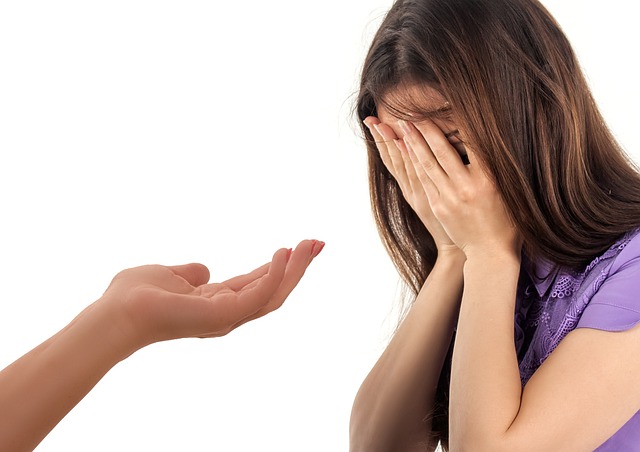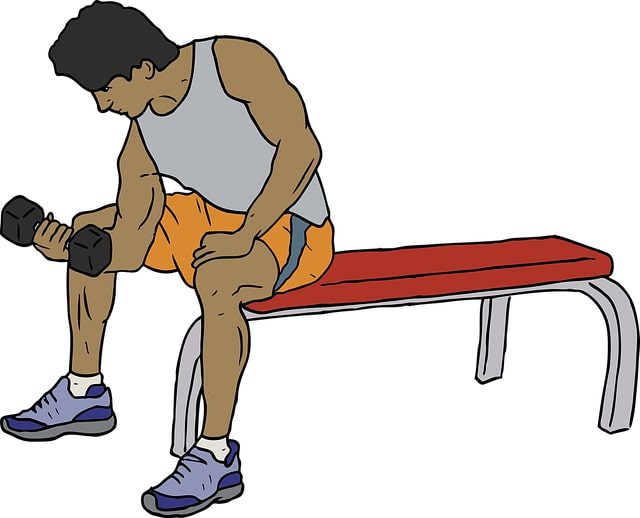The State of Modern Mental Health
In a world that never sleeps, the mind struggles to rest. The modern human is more connected than ever—digitally intertwined, yet emotionally adrift. The noise of notifications, the constant pressure to perform, and the unrelenting pace of life have become silent aggressors, eroding our emotional equilibrium.
Our society has traded stillness for speed, mindfulness for multitasking. This acceleration of existence has not come without cost. Emotional fatigue, anxiety, and disconnection have become the quiet companions of progress. It is time to redefine what it means to be truly well—not merely functional, but MentalHealthy.
Understanding Mental Health Beyond the Basics
Breaking the Stigma: Why Mental Health Isn’t Just About Illness
For too long, mental health has been viewed through the narrow lens of disorder. But wellbeing is not merely the absence of pathology; it is the presence of psychological vitality. When we speak of mental health, we speak of emotional literacy, adaptability, and inner harmony. Breaking the stigma begins when we treat mental wellness as essential, not exceptional.
The Psychology of Happiness and Resilience
Happiness is not a constant state, but a fluctuating spectrum influenced by purpose, relationships, and mindset. Resilience—the art of bouncing forward, not just back—lies at the heart of sustainable happiness. It is the quiet strength built through adversity, cultivated by self-awareness and supported by community.
Mental Fitness Versus Mental Illness: A Crucial Distinction
Just as the body requires movement, the mind demands maintenance. Mental fitness involves proactive care—training one’s thoughts, regulating emotions, and managing stress. It differs from mental illness, which requires treatment and compassion. Both deserve acknowledgment, free from shame or comparison.
The Silent Epidemic: Stress, Burnout, and Overload

Photo by Pixabay / Free to use under license.
The Cost of Chronic Stress on Body and Mind
Chronic stress acts like a slow toxin, corroding the nervous system, impairing immunity, and clouding cognition. It’s not a badge of honor—it’s a biological hazard. When stress becomes perpetual, the mind loses clarity, and the body forgets rest.
Digital Fatigue: How Constant Connectivity Drains Mental Energy
Every ping, every scroll, every alert steals a sliver of attention. Over time, these micro-interruptions accumulate into exhaustion. The human brain was not designed for endless input—it yearns for silence, for the sacred space between stimuli.
Burnout Culture: The Glorification of Exhaustion
In the modern workplace, burnout is too often mistaken for dedication. We’ve romanticized overwork and vilified rest. But true productivity stems from balance, not depletion. To thrive, we must unlearn the toxic valorization of being “always on.”
The Science of the Mind-Body Connection
Neuroscience of Emotions: How the Brain Shapes Mood
The human brain is an intricate orchestra of neurons, chemicals, and impulses. Emotions are not abstract—they are biochemical realities. Understanding the neural pathways of emotion allows us to reframe how we manage them: through awareness, not suppression.
The Physiological Response to Mental Strain
When the mind perceives danger, the body reacts in kind. Elevated cortisol, rapid heartbeat, shallow breath—these are echoes of ancient survival mechanisms. Chronic activation, however, disrupts homeostasis, leaving us trapped in perpetual defense mode.
Hormones, Neurotransmitters, and the Architecture of Calm
Serotonin, dopamine, and oxytocin—the triumvirate of calm—govern how we experience joy, trust, and tranquility. Nurturing these natural chemicals through sleep, movement, and connection can reshape the architecture of serenity.
Cultural Shifts in Mental Wellness
How Generational Attitudes Toward Mental Health Are Evolving
Where older generations once whispered about “nerves,” younger ones speak openly of therapy and trauma. The dialogue has expanded, allowing vulnerability to coexist with strength. This shift is not merely cultural—it’s revolutionary.
The Global Mental Health Movement: From Taboo to Mainstream

Photo by Pixabay / Free to use under license.
Mental health is no longer a marginal conversation. From boardrooms to classrooms, the dialogue is gaining legitimacy. Governments, corporations, and influencers are beginning to recognize that a healthy mind is the cornerstone of progress.
Media and the Portrayal of Psychological Wellbeing
Media can either perpetuate stigma or promote healing. The modern narrative is changing—from caricatures of instability to authentic portrayals of recovery, resilience, and self-care. Representation matters; it shapes empathy.
Lifestyle and the Mind: Building Everyday Mental Strength
The Role of Nutrition in Emotional Balance
What we eat shapes how we think. Nutritional psychiatry reveals the deep link between the gut and the brain—the microbiome as a silent regulator of mood. Whole foods, omega-rich fats, and mindful eating become tools for emotional stability.
Exercise as a Mood Stabilizer and Cognitive Enhancer
Movement is medicine. Exercise releases endorphins, sharpens focus, and combats anxiety. Beyond physical fitness, it cultivates a sense of agency—the belief that one can move through life’s heaviness with grace.
The Restorative Power of Quality Sleep
Sleep is the body’s nightly restoration ritual. In its absence, memory falters, emotions fray, and the mind loses its anchor. Prioritizing rest is not indulgence—it is necessity.
Mindfulness and Modern Healing Practices
Meditation as Medicine: Evidence-Based Benefits
Once considered esoteric, meditation is now scientifically validated. It calms the amygdala, enhances gray matter, and nurtures presence. Just minutes of mindfulness can transform the trajectory of one’s mental state.
Breathwork and Grounding Techniques for Instant Relief
Breath is the bridge between chaos and calm. Slow, deliberate inhalations signal safety to the nervous system. Grounding—through touch, sound, or awareness—restores the self to the present moment.
Integrating Ancient Wisdom with Modern Therapy
The future of healing lies in synthesis. Combining cognitive therapy with mindfulness, yoga, or somatic awareness bridges science and spirit—an alliance for holistic wellbeing.
Technology and Mental Health: Friend or Foe?
Mental Health Apps: Empowerment or Dependency?
Digital tools can democratize access to care, offering mindfulness training or CBT modules at a touch. Yet overreliance on screens for serenity risks further detachment from real-world healing.
Social Media’s Paradox: Connection vs Comparison
Social media connects billions but isolates millions. The curated lives we scroll through distort reality, breeding envy and inadequacy. Authenticity must replace aesthetics for mental health to thrive.
The Emerging World of Digital Detoxing
Reclaiming time offline is an act of rebellion and renewal. Digital detoxing restores clarity, creativity, and self-awareness—reminding us that silence, too, is a language.
Relationships and Emotional Wellbeing
The Importance of Empathy and Communication in Relationships
Empathy is emotional intelligence in action. When we listen to understand rather than respond, we create psychological safety. Communication becomes not a transaction, but a form of healing.
Boundaries: Protecting Your Peace Without Guilt
Boundaries are not walls—they are gates of self-respect. Saying no without apology, resting without shame, and prioritizing self-preservation are acts of courage.
Loneliness in the Age of Connection
We are surrounded by people yet starved for presence. Loneliness has become a public health crisis, reminding us that genuine connection cannot be replicated by algorithms.
Workplace Mental Health Revolution
Corporate Wellness Initiatives That Actually Work
Organizations are learning that wellness programs cannot be performative. True wellbeing arises from empathetic leadership, flexible policies, and psychological safety at every level.
How Leadership Shapes Collective Mental Wellbeing
A leader who models vulnerability fosters trust. When management values mental health as much as metrics, teams thrive—not just survive.
Remote Work, Isolation, and the Pursuit of Balance
Remote work redefined freedom but blurred boundaries. Balance now means intentional disconnection, structured rest, and conscious engagement.
Youth and Mental Health: The New Frontier
The Mental Toll of Academic Pressure
Perfectionism has infiltrated classrooms. The relentless pursuit of grades has replaced curiosity with anxiety. Education must evolve to prioritize emotional literacy as much as intellect.
Social Media Influence on Adolescent Identity
For young minds, likes can feel like validation. This dependence reshapes self-worth. Teaching digital resilience is as vital as teaching mathematics.
How Schools Can Become Safe Spaces for Mental Growth
Schools should be sanctuaries for both learning and emotional safety. Incorporating mindfulness programs and peer support systems can redefine the future of education.
Mental Health in the Later Years
Cognitive Resilience and Aging Gracefully
Aging minds are not declining—they are transforming. Cognitive exercises, lifelong learning, and social engagement preserve vitality and purpose.
Combating Loneliness and Purpose Loss in Retirement
Retirement often brings silence where structure once existed. Redefining purpose—through hobbies, mentorship, or volunteering—restores meaning.
Mindful Aging: Cultivating Peace Through Wisdom
With age comes reflection, and with reflection comes acceptance. Mindful aging celebrates stillness, presence, and the poetry of life’s latter chapters.
The Role of Therapy and Professional Support

Photo by Pixabay / Free to use under license.
When to Seek Help: Recognizing Early Warning Signs
Withdrawal, fatigue, irritability—subtle shifts that whisper of deeper distress. Seeking help early prevents crises later. There is no weakness in asking for guidance.
Different Therapeutic Approaches and Their Benefits
From cognitive behavioral therapy to EMDR and somatic healing, therapy now offers diverse modalities for diverse minds. The right approach is personal, not prescriptive.
The Evolution of Teletherapy and Online Counseling
Technology has made help accessible. Teletherapy breaks geographic and social barriers, offering confidential care in the comfort of one’s home.
The Power of Self-Awareness and Reflection
Journaling as a Mirror for Emotional Clarity
Writing externalizes thought, turning chaos into coherence. Through words, we decode our emotions, revealing hidden fears and unspoken desires.
Recognizing Personal Triggers and Emotional Patterns
Awareness transforms reaction into response. Identifying emotional triggers allows us to rewrite the scripts that once governed our pain.
The Art of Acceptance and Self-Forgiveness
Healing begins where judgment ends. Acceptance is not resignation—it is peace with imperfection, the soft exhale after years of holding in.
Community and Collective Healing
Support Groups and Shared Experiences
There is power in shared vulnerability. In community, healing multiplies—pain is halved, and hope amplified.
Volunteerism as a Pathway to Emotional Restoration
Serving others shifts perspective. Empathy becomes medicine, gratitude the antidote to despair.
Building Mental Health–Friendly Communities
A mentally healthy society values compassion over competition. Accessible services, inclusive spaces, and open dialogue form its foundation.
Mental Health and Creativity
Art as a Therapeutic Outlet for Inner Turmoil
Art translates pain into beauty. Through color, texture, and form, the unspeakable finds voice.
Music, Movement, and Expression as Healing Modalities
The rhythm of a drum, the sway of dance—these are ancient languages of release. Expression reconnects us to emotion, body, and breath.
How Creativity Rewires the Brain for Resilience
Creative pursuits stimulate neuroplasticity, strengthening the brain’s ability to adapt. Innovation is not just artistic—it is neurological renewal.
Breaking the Myths Surrounding Mental Health
Common Misconceptions That Hinder Healing
Mental illness is not a choice, and therapy is not a luxury. Dispelling myths dismantles barriers to recovery.
Separating Emotional Weakness from Human Vulnerability
Vulnerability is strength in motion. It is the courage to be seen, even in imperfection.
The Danger of Toxic Positivity
Relentless optimism can invalidate genuine pain. True healing embraces both shadow and light.
The Future of Mental Wellbeing
AI, Neuroscience, and the Next Wave of Mental Health Innovation
From predictive algorithms to brain-computer interfaces, technology is reshaping diagnosis and treatment. Yet, ethics must guide innovation, ensuring humanity remains central.
Integrative Approaches Combining Medicine and Mindfulness
The convergence of pharmacology, psychology, and meditation heralds a new era of holistic healing—precision medicine for both body and soul.
A Hopeful Vision for a Mentally Healthy Society
Imagine a world where empathy is taught, rest is honored, and connection is currency. That is the vision of true wellbeing.
Practical Steps Toward a MentalHealthy Life
Daily Rituals to Nurture Inner Calm
A morning stretch, deep breath, or mindful pause—small acts with profound effects. Peace begins in micro-moments.
Building a Personal Mental Health Toolkit
Your toolkit might include journaling, therapy, nature walks, or music. The key is consistency, not complexity.
Sustaining Balance in a Chaotic World
Balance is not a destination but a rhythm—one that requires continuous tuning. It is choosing presence amid noise, and rest amid demand.
Conclusion: Living the MentalHealthy Way
To live MentalHealthy is to embrace imperfection with grace, to find stillness within motion, and to cultivate compassion—inward and outward. It is a way of being that honors both the fragility and the strength of the human spirit. In a chaotic world, the greatest revolution is calm.




